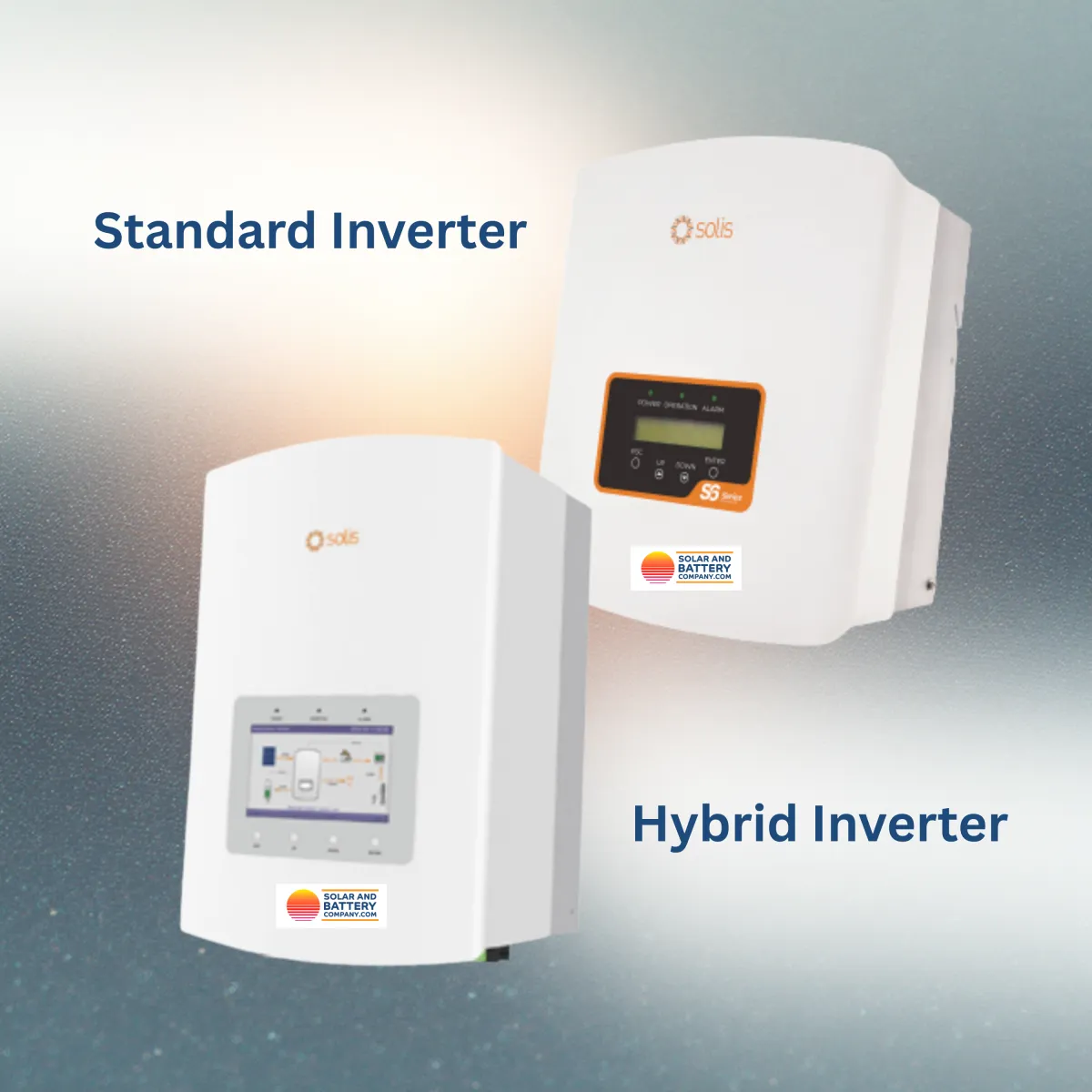
What is the Best Inverter for Solar? Hybrid Inverters Vs Standard Inverters
What is the Best Inverter for Solar? Hybrid Inverters vs. Standard Inverters: What’s the Difference?
As solar power systems and home batteries become more prevalent, homeowners and businesses are faced with a variety of equipment choices that can significantly impact the efficiency and cost-effectiveness of their investments. One of these decisions is whether to use a hybrid inverter or a standard inverter. Both play a pivotal role in converting the DC electricity generated by solar panels into AC electricity that can be used by home appliances or fed back into the grid. This article will explore the differences between hybrid inverters and standard inverters so that you have the answer to the question “what’s the difference”. Spoiler alert, 90% of new solar installation customers should opt for a hybrid inverter.
What is a Standard Inverter?
A standard inverter, also known as a string inverter (or they could be micro-inverters too), is a device that converts the direct current (DC) electricity produced by solar panels into alternating current (AC) electricity. This AC electricity is compatible with the electrical grid and can be used to power household appliances.
Benefits of Standard Inverters
Cost-Effectiveness: Standard inverters are generally slightly cheaper, making them a good choice for those on a tight budget and that don’t think they will require a battery in the future. The thing to be aware of here is, for most home owners, a battery is required to realise the best paybacks for a system. If there is a situation where all the electricity generated would be used in real time, the argument for not having a battery is stronger, but these tend to be for commercial property.
What is a Hybrid Inverter?
A hybrid inverter not only converts DC to AC but also manages energy storage systems (batteries). They allow solar energy to be deployed directly into the battery and converted to AC when it is needed in the home. There are further adaptations of this, such as an AC coupled inverter using a hybrid inverter (which is used when there is already a standard inverter in place for an existing system), but that goes beyond the scope of this article.

Benefits of Hybrid Inverters
Energy Independence: Hybrid inverters allow for energy storage (a battery to be added to the system), reducing reliance on the grid and the potential of providing power during outages if added as an upgrade. The main benefit though, is the ability to store energy, whether that from a solar p.v. system or from the grid at night, resulting in much lower electricity bills.
Maximised Solar Utilisation: By storing excess energy, hybrid inverters ensure that solar power is used efficiently, even when production exceeds immediate demand.
Advanced Energy Management: They offer sophisticated monitoring and management capabilities, enabling better optimization of energy usage.
Limitations of Standard Inverters
No Storage Integration: Standard inverters cannot manage battery storage, limiting their ability to provide power during non-sunny periods or outages.
Dependence on Grid: They are ideal for grid-tied systems but do not offer the same level of energy independence as hybrid systems.
Limitations of Hybrid Inverters
Higher Costs: The advanced features and battery integration come with a higher price tag, although this difference has become negligible in recent times and the price difference is normally only a couple of hundred pounds.
It is well worth the upgrade in our opinion if you already have a solar P.V. system and need to replace your current inverter anyway.
Complexity: Installation and maintenance can be more complex, requiring specialised knowledge and skills.
Conclusion
Choosing between a hybrid inverter and a standard inverter used to be slightly more debatable than it is now due to the larger price differences.
Now though, for the majority of people, it is difficult to argue that a standard inverter is better than a hybrid inverter because the difference in price is so little. New solar installations should 99% of the time have a hybrid inverter to be able to add a battery to the system.
It is difficult to make the financial case for a solar p.v. system on its own without a battery in a residential setting, unless you are going to be in all day every day and use all the energy as it is generated.
Want More?
For more related content from our knowledge centre on inverters, check out these articles too:
https://solarandbatterycompany.com/post/what-is-an-inverter-as-part-of-a-solar-pv-installation
https://solarandbatterycompany.com/post/string-inverters-vs-microinverters-vs-hybrid-inverters
